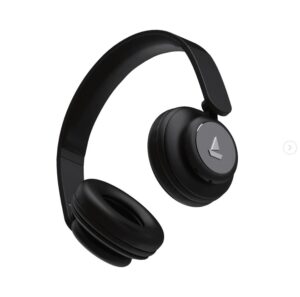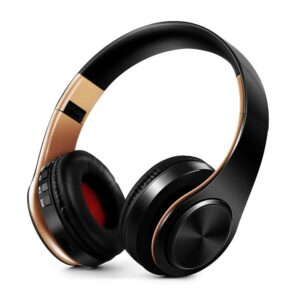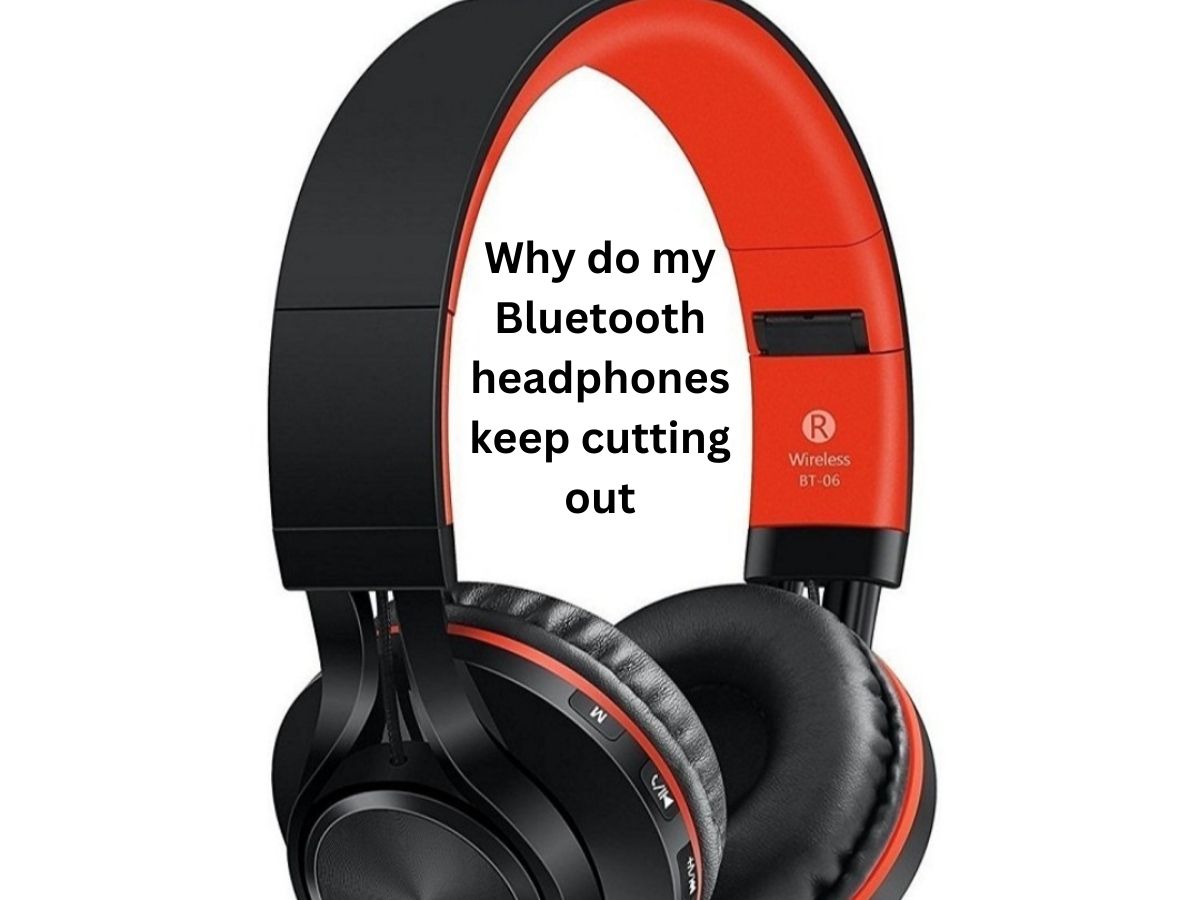Bluetooth headphones have become a popular choice for many people seeking a wireless audio experience. They offer convenience and freedom of movement, allowing us to enjoy music, take phone calls, or engage in workouts without the hassle of tangled wires.
However, one common issue that plagues Bluetooth headphone users is the frustrating problem of audio cutouts.
Imagine being in the middle of an important phone call when suddenly the sound drops out, leaving you struggling to hear the other person on the line.
Or picture yourself pumped up during a workout session, only to have your favorite beats interrupted by frequent audio disruptions. These instances can be incredibly irritating and can diminish the overall enjoyment of using Bluetooth headphones.
If you’ve ever wondered why your Bluetooth headphones keep cutting out, you’re not alone. In this article, we’ll delve into the potential causes behind this problem and provide you with troubleshooting tips and solutions to get your headphones working flawlessly again.
So, let’s uncover the mysteries of Bluetooth headphone cutouts and find ways to eliminate them for good.

 Common Causes of Bluetooth Headphone Cutouts
Common Causes of Bluetooth Headphone Cutouts
Signal Interference
Signal interference is one of the primary culprits behind Bluetooth headphone cutouts. Bluetooth operates on radio waves, and these waves can be obstructed by various obstacles in the environment.
Walls, furniture, or even other electronic devices like microwaves or Wi-Fi routers can interfere with the Bluetooth signal, causing disruptions in audio playback.
Moreover, the distance between your headphones and the source device can impact the signal strength. If you move too far away from the source, especially if there are multiple walls or obstructions in between, the Bluetooth connection may weaken, leading to audio dropouts.
Battery Level and Performance
Believe it or not, the battery level of your Bluetooth headphones can affect their connectivity. When the battery is low, the headphone’s performance may be compromised, leading to intermittent cutouts.
It’s crucial to regularly charge your headphones to ensure they have enough power to maintain a stable connection.

Software or Firmware Issues
Software or firmware problems can contribute to Bluetooth headphone cutouts. If your source device or headphones have outdated or incompatible software/firmware, it can create compatibility issues that result in connectivity problems.
Check for software updates on both your device and headphones, as manufacturers often release patches to address such issues.
If you’re experiencing persistent problems, reaching out to the manufacturer’s support team can provide further assistance and guidance.
Hardware Malfunction
Although less common, hardware malfunctions can also cause audio cutouts in Bluetooth headphones. Physical damage, such as a loose or faulty connection within the headphones, can disrupt the Bluetooth signal and lead to intermittent audio interruptions.
It’s worth inspecting your headphones for any visible damage and ensuring all connections are secure.
If you’ve ruled out other causes and suspect a hardware issue, contacting the customer support of your headphone manufacturer is recommended.
They can guide you through troubleshooting steps specific to your device and provide further assistance or arrange repairs if needed.
By understanding these common causes, you’ll be better equipped to troubleshoot and resolve Bluetooth headphone cutouts.
Troubleshooting Steps
If you’re experiencing Bluetooth headphone cutouts, here are some step-by-step troubleshooting tips to help you resolve the issue:
- Ensure Bluetooth is turned on and discoverable on both the headphones and the connected device. Check the settings on both devices to make sure Bluetooth is enabled and ready to connect.
- Verify that the headphones are properly charged and within the recommended range. Low battery levels can impact Bluetooth connectivity, so charge your headphones fully before use. Additionally, ensure that you’re within the recommended operating range, typically around 30 feet or 10 meters, as going beyond this range can weaken the connection.
- Check for nearby wireless devices that may interfere with the Bluetooth connection. Other Bluetooth devices, Wi-Fi routers, or even microwave ovens can cause signal interference. Try moving away from crowded Wi-Fi areas or turning off other Bluetooth devices nearby.
- Update the firmware and drivers of both the headphones and the connected device. Outdated firmware or drivers can contribute to connectivity issues. Visit the manufacturer’s website or app to check for firmware or software updates and follow their instructions to install them.
- Reset the Bluetooth connection and re-pair the headphones if necessary. On your connected device, go to the Bluetooth settings and forget/remove the headphones. Then, reset your headphones by following the instructions in the user manual. Once reset, re-pair the headphones with your device.
- Try using the headphones with a different device to isolate the problem. Connect your headphones to another device, such as a smartphone or tablet, to determine if the issue persists. If the cutouts occur across multiple devices, it indicates a headphone-related problem. If the issue is isolated to a specific device, it may be a device-specific issue.
- Consider using a Bluetooth range extender or relocating the connected device if interference persists. If you consistently experience cutouts when moving around or when the device is far from the headphones, a Bluetooth range extender can help strengthen the signal. Alternatively, try repositioning the connected device to reduce obstructions and improve connectivity.
- Consult the user manual or contact customer support for further assistance. If none of the above steps resolve the issue, refer to the user manual of your headphones for specific troubleshooting guidance. Additionally, don’t hesitate to reach out to the customer support of your headphone manufacturer for further assistance and troubleshooting tailored to your device.
By following these troubleshooting steps, you can eliminate common issues and improve the Bluetooth connectivity of your headphones, ultimately reducing or eliminating audio cutouts.

Additional Tips and Best Practices
In addition to the troubleshooting steps, here are some practical tips and best practices to optimize the performance of your Bluetooth headphones and reduce the occurrence of cutouts:
- Keep devices and headphones close for better signal strength. The closer your headphones are to the connected device, the stronger the Bluetooth signal will be. This can help minimize signal degradation and cutouts. Avoid excessive distance between the devices whenever possible.
- Reduce obstructions between the devices and the headphones. Obstacles like walls, furniture, or even your own body can weaken the Bluetooth signal. Try to maintain a clear line of sight between the headphones and the connected device. If you’re experiencing frequent cutouts, consider adjusting your positioning or removing any potential obstructions.
- Regularly update firmware and drivers to benefit from bug fixes and performance improvements. Manufacturers often release updates that address connectivity issues and enhance the overall performance of Bluetooth headphones. Check for updates periodically and follow the instructions provided by the manufacturer to keep your headphones up to date.
- Use high-quality Bluetooth headphones with advanced connectivity features. Investing in reputable brands and models known for their reliable Bluetooth connectivity can make a significant difference. Look for headphones with features like aptX or AAC support, as they provide better audio quality and more stable connections.
- Properly maintain and care for the headphones to ensure their longevity. Follow the manufacturer’s guidelines for cleaning and storing your headphones. Avoid exposing them to extreme temperatures or excessive moisture. Taking good care of your headphones can help maintain their performance and reduce the chances of hardware-related issues causing cutouts.
By implementing these tips and best practices, you can optimize the performance of your Bluetooth headphones and minimize the occurrence of audio cutouts.
Remember, a little extra attention to signal strength, firmware updates, and headphone maintenance can go a long way in ensuring a seamless and uninterrupted audio experience. Check to know if you can use Bluetooth while on the plane.
How do I know if my headphones need a firmware update?
To determine if your headphones need a firmware update, you can follow these general steps:
- Check the manufacturer’s website: Visit the official website of the headphone manufacturer and look for a support or download section. Many manufacturers provide firmware updates for their devices on their website.
- Read the product documentation: Consult the user manual or any accompanying documentation that came with your headphones. It may contain information on firmware updates and how to check for them.
- Contact customer support: If you’re unable to find firmware update information through the manufacturer’s website or product documentation, reach out to their customer support. They can provide you with the necessary details and guide you through the process of checking for firmware updates.
- Download the manufacturer’s firmware update tool: Some headphone manufacturers provide dedicated software or apps that can check for and install firmware updates. Check if the manufacturer offers such a tool for your specific headphones and download it from their official website or app store.
- Connect your headphones to a computer or mobile device: Depending on the firmware update process, you may need to connect your headphones to a computer or mobile device. Follow the instructions provided by the manufacturer to establish the connection correctly.
- Check for firmware updates: Once your headphones are connected to the appropriate device, launch the firmware update tool or app provided by the manufacturer. It should have a feature or section that allows you to check for available updates. Click or tap on the update check button to initiate the process.
- Follow the update instructions: If a firmware update is available, the tool or app will provide instructions on how to proceed. Follow these instructions carefully to ensure a successful update. This may involve confirming the update, downloading and installing the new firmware, and waiting for the process to complete.
- Verify the firmware update: After the update process is finished, check the firmware version of your headphones to confirm that the update was successful. You can usually find this information in the settings or about section of your headphones, or it may be displayed within the update tool or app.
It’s important to note that the specific steps and process for checking and installing firmware updates may vary depending on the headphone brand and model. Always refer to the manufacturer’s instructions and guidelines for the most accurate and up-to-date information regarding firmware updates for your specific headphones.
Why Your Bluetooth Headphones Keep Cutting Out FAQs
Can Bluetooth headphones cut out due to low signal strength?
Yes, Bluetooth headphones can experience cutouts or interruptions in audio due to low signal strength. Bluetooth technology uses radio waves to transmit data between devices, and obstacles such as walls, furniture, or distance between the headphones and the audio source can weaken the signal. If the signal becomes too weak or obstructed, it can result in audio dropouts or cutouts.

Why do my headphones work fine with some devices but not others?
There can be several reasons why your Bluetooth headphones work well with some devices but not others. Compatibility is one factor to consider. Different devices may use different Bluetooth versions or have varying levels of Bluetooth support, which can impact the quality of the connection. Additionally, some devices may have interference from other wireless signals or may not have optimal Bluetooth antenna placement, leading to weaker connections and potential audio issues.
Are there specific Bluetooth headphone models less prone to cutouts?
While there are no guarantees, certain Bluetooth headphone models may be less prone to experiencing cutouts due to their design or advanced features. Look for headphones that utilize Bluetooth 5.0 or higher, as these versions generally offer better signal stability and range. Additionally, headphones with aptX or LDAC codecs can provide improved audio quality and lower latency, which can help minimize cutouts. It’s also worth reading user reviews and researching the reputation of different headphone models to see if users commonly report issues with cutouts.
What can I do if my headphones continue to cut out after troubleshooting?
If your Bluetooth headphones continue to experience cutouts even after troubleshooting, there are several steps you can take:
- Ensure your headphones are fully charged: Low battery levels can weaken the Bluetooth signal and result in audio dropouts. Charge your headphones fully and see if the issue persists.
- Reduce interference: Move away from other devices that may interfere with the Bluetooth signal, such as Wi-Fi routers, cordless phones, or microwave ovens. These devices can operate on similar frequencies and cause signal interference.
- Keep devices close: Place your audio source (e.g., smartphone, tablet) as close as possible to your Bluetooth headphones. The closer the devices are, the stronger the signal strength and the less likely you are to experience cutouts.
- Reset connections: Disconnect and forget the Bluetooth pairing on both your headphones and the audio source. Then, reestablish the connection and see if the cutouts improve.
- Update firmware: Check if there are any firmware updates available for your headphones. Manufacturers often release updates to address connectivity and performance issues. Follow the instructions provided by the manufacturer to update your headphones if applicable.
- Try a different device: Test your headphones with a different audio source to determine if the issue is specific to one device. If the cutouts persist across multiple devices, it may indicate a problem with the headphones themselves.
- Contact customer support: If the troubleshooting steps do not resolve the issue, reach out to the manufacturer’s customer support. They can provide further assistance and guide you through additional troubleshooting steps or offer a warranty replacement if necessary.
How can I prevent Bluetooth headphone cutouts during workouts?
During workouts, Bluetooth headphones can be susceptible to cutouts due to interference from movement or other factors. Here are some tips to help prevent cutouts during workouts:
- Opt for headphones with a secure fit: Choose headphones specifically designed for sports or workouts, as they are often more secure and less likely to move or shift during exercise. In-ear headphones or those with ear hooks can provide a snug fit that reduces the chance of signal interruptions.
- Keep the audio source close: Keep your audio source (e.g., smartphone) in a pocket or armband close to your headphones. The proximity helps maintain a stronger Bluetooth connection and reduces the chances of cutouts.
- Minimize obstructions: Try to avoid placing any obstructions, such as your body or gym equipment, between the audio source and your headphones. Clear line-of-sight between the devices can improve signal strength and reduce the likelihood of cutouts.
- Avoid crowded Bluetooth environments: In gyms or crowded areas, multiple Bluetooth devices may be in use simultaneously, which can cause interference. If possible, choose a less congested frequency band (e.g., switch to the 5 GHz Wi-Fi band if your devices support it) or switch to a wired connection if your headphones allow it.
- Optimize headphone placement: Experiment with different positions for your Bluetooth headphones during workouts. For example, if you wear your audio source on your right side, try wearing your headphones on your right ear to minimize the distance and potential obstructions between the devices.
- Consider Bluetooth range: Bluetooth range can vary between devices. If you consistently experience cutouts during workouts, consider upgrading to headphones or an audio source that provide an extended Bluetooth range. This can help maintain a stronger connection even if you move around the workout area.
By following these suggestions, you can minimize the likelihood of experiencing Bluetooth headphone cutouts during workouts and enjoy uninterrupted audio during your exercise sessions.
Conclusion
In conclusion, Bluetooth headphones can experience cutouts due to low signal strength, which can be caused by obstacles or distance between the headphones and the audio source.
Compatibility and interference issues can also affect the performance of headphones with different devices. While there are no guarantees, certain Bluetooth headphone models may be less prone to cutouts due to their design and advanced features.
If your headphones continue to cut out after troubleshooting, you can try steps such as ensuring a full charge, reducing interference, resetting connections, updating firmware, trying a different device, and contacting customer support for further assistance.
To prevent Bluetooth headphone cutouts during workouts, opt for headphones with a secure fit, keep the audio source close, minimize obstructions, avoid crowded Bluetooth environments, optimize headphone placement, and consider Bluetooth range.
To determine if your headphones need a firmware update, check the manufacturer’s website, read the product documentation, contact customer support, or download the manufacturer’s firmware update tool.
Connect your headphones to a computer or mobile device, check for firmware updates using the provided tool or app, follow the update instructions carefully, and verify the firmware update afterward.
Always refer to the specific instructions and guidelines provided by the manufacturer for the most accurate information regarding firmware updates and troubleshooting steps for your particular headphones.

